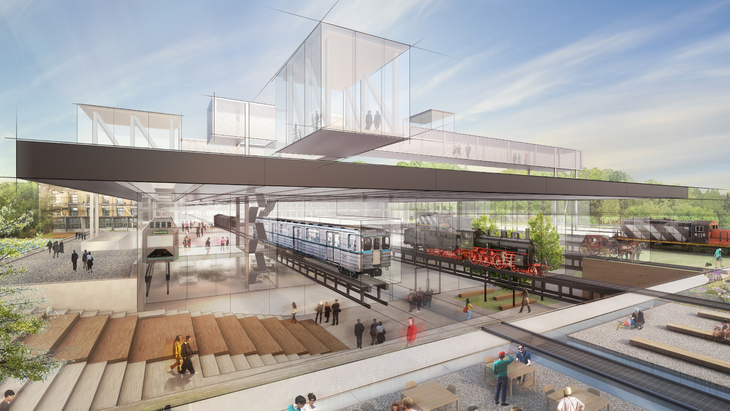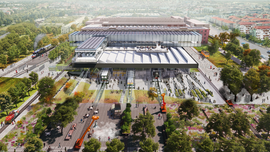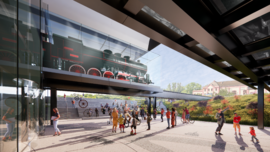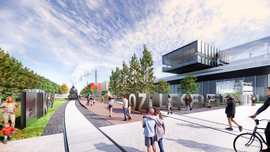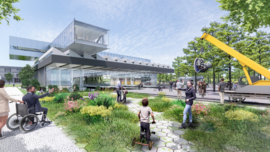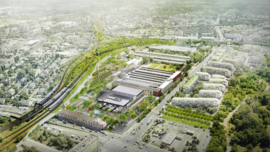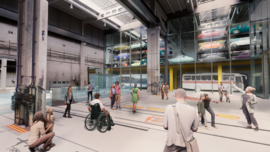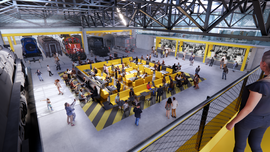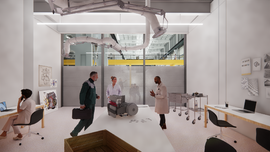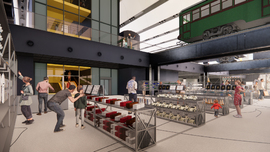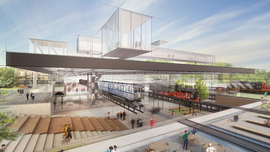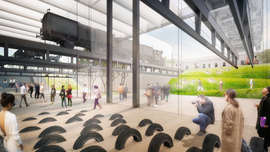The Hungarian Museum of Science, Technology and Transport
2019, Budapest
lead designer: DILLER SCOFIDIO+RENFRO Hungarian partner M-Teampannon Kft. 1st prize
Museums play many roles in civil society. Usually they entertain, often they educate, and sometimes, they explain the past. Occasionally, they get to make the future. Rarely do they do all at once.
But the Museum of Transport will do it all. It will harness the power of historical architecture and artifacts to reconsider the future—of transport, of cities and of people.
This museum is literally and metaphorically at a crossroads: situated on an existing nexus of transit lines and roads that both deliver visitors and demonstrate the value of mass transit before even reaching the museum. Its emergence is also timed at a crossroads for human development, when transit will be redefined for future generations less dependent on fossil fuels, though ever hungry for mobility.
Humankind perfected cooperation. Millions act collectively with the shared goal to improve each individual’s position in the world. Public transport embodies the moment when that universal cooperation met technology. It began with trains, diversified to buses, cars, and planes, and will continue to evolve into driverless vehicles, shared transit and space travel. Public transport has united and defined Hungary and will continue to play a vital role into the country’s future.
Technology will also continue to further humankind's ability to communicate, cooperate and grow. While transport will remain one the primary beneficiaries of technological evolution, it has also contributed to an imperiled future.
While we celebrate a glorious past, we must also work towards a better future.Together with our colleagues at the Transport Museum, as well as our collaborators from the United States and Europe, we are thrilled to have been selected to design this exciting and important new museum.
A few notes about the design:
To start, the museum won't simply showcase. It will demonstrate.
Perpetual motion will return to the site. Tracks will be restored and extended, existing fabrication and distribution equipment will be rehabilitated and the mobile holdings of the museum will again move under their own power or with the aid of the building's systems. Mobility itself will be on display, creating an ever-changing exhibition landscape.
Existing buildings will be adapted, safeguarding precious resources and preserving endangered histories. New additions will be structurally ambitious, mirroring the industrial sublimity of the existing sheds. And they will be ecologically groundbreaking, demonstrating how contemporary building should safeguard our environment.
But they will also be subtle: their simple glass facades will reveal the collection. The objects will become the image of the building, visible from inside and outside the building, with or without a ticket. Inside the museum, the ground will be subverted to provide new ways of experiencing ground transportation: from below, above and at grade.
New modes of display such as x-ray technologies, sectional cuts, micro galleries that change daily, and accessible storage will expand visitor's experiences and keep each trip to the museum unique. Scheduled daily movements of rolling stock will add a bit of theater to each visit.
Surrounding the museum will be a landscape fueled by transport, comprised of seeds, flora, and fauna dropped from passing trains and cars along the networks of tracks and roadways. Whatever has taken hold over the years will be reintegrated on site into an ecologically sound landscape, in a fashion similar to how we reseeded the High Line in New York.
Public gathering spaces within these grounds will welcome visitors throughout the year, whether stopping into the museum or simply having a picnic.
Ecologically, we will explore many cutting edge technologies and systems to reduce or eliminate our carbon footprint. We will generate energy locally using the sun, the earth, and water. We will develop new ways to store energy and perhaps most importantly, we will use the building as a way of demonstrating how sustainable energy can fuel future transit.
All of these systems will be made as visible as the collection of the museum.
C. Renfro 2/28/19
